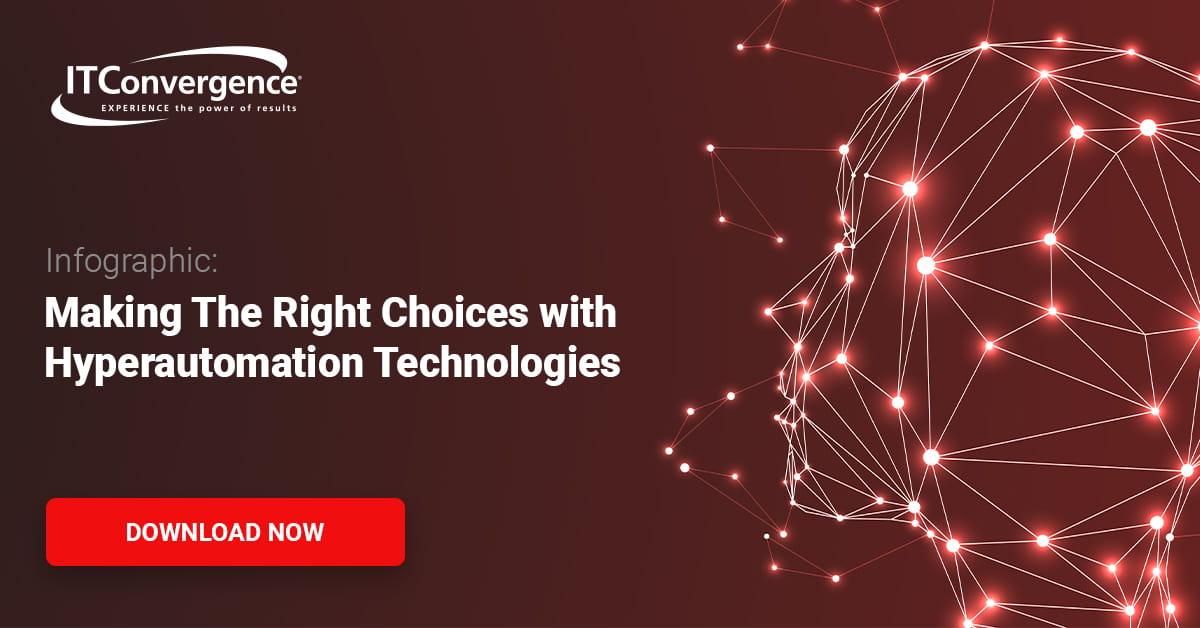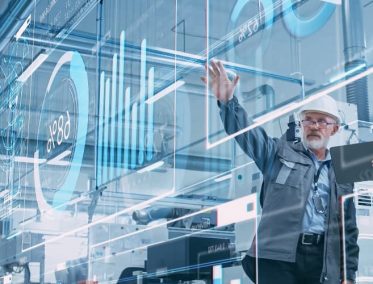As we stand on the cusp of 2024, the landscape of hyperautomation is evolving at an unprecedented pace, reshaping how organizations approach efficiency, innovation, and digital transformation. Hyperautomation, the amalgamation of artificial intelligence (AI), machine learning (ML), robotic process automation (RPA), and other advanced technologies, is driving a paradigm shift in how businesses operate. In this article, we will explore the key hyperautomation trends that are set to define the technological landscape in 2024.
Hyperautomation Trends for 2024
Convergence of AI and RPA
One of the defining hyperautomation trends for 2024 is the deepening integration of AI and RPA. While RPA streamlines rule-based, repetitive tasks, AI introduces cognitive capabilities, enabling systems to adapt and learn. The convergence of these technologies allows for more intelligent automation, where processes not only follow predefined rules but also evolve based on insights derived from data. This symbiotic relationship between AI and RPA will result in more adaptive and resilient automation systems. While RPA efficiently manages rule-based, repetitive tasks like order fulfillment, AI concurrently analyzes vast datasets related to customer behavior. This harmonious collaboration empowers the system not only to adhere to predefined rules but also to dynamically adapt and learn from evolving customer preferences. The result is an intelligent automation system that not only expedites processes but also proactively evolves based on real-time insights, creating a more adaptive and resilient operational ecosystem.
Extended Process Mining Capabilities
Process mining, the practice of analyzing event logs to gain insights into business processes, is set to become more sophisticated in 2024. Hyperautomation will leverage advanced analytics to provide deeper visibility into end-to-end processes, identifying bottlenecks, inefficiencies, and areas for optimization. This enhanced process mining capability will be instrumental in refining automation workflows, ensuring they align seamlessly with organizational goals and objectives.
Hyperautomation for Cybersecurity
As cyber threats continue to evolve in complexity, hyperautomation is emerging as a key player in fortifying cybersecurity measures. In 2024, it is expected to see an increased focus on automating threat detection, incident response, and vulnerability management. AI-driven algorithms will play a pivotal role in analyzing vast datasets to identify abnormal patterns, while automated response mechanisms will mitigate threats in real-time. Hyperautomation trends will prove to be an invaluable asset in the ongoing battle against cyber threats. A notable real-world example involves a financial institution at the forefront of cybersecurity. Here, AI-driven algorithms tirelessly analyze vast datasets, identifying anomalous patterns indicative of potential threats. Automated response mechanisms, seamlessly integrated, swing into action in real-time, mitigating threats before they escalate. This dynamic interplay between AI and automation positions hyperautomation as an invaluable asset in the perpetual battle against cyber threats.
Low-Code and No-Code Hyperautomation Platforms
The democratization of hyperautomation is gaining momentum with the rise of low-code and no-code platforms. These user-friendly tools enable individuals with limited programming skills to create and implement automated processes. In 2024, we anticipate a surge in the adoption of low-code and no-code hyperautomation platforms, empowering a broader range of users to contribute to the automation revolution. This trend will accelerate the pace of digital transformation across industries. Now even the non-technical staff can actively participate in designing and implementing automated workflows, reducing dependence on IT teams. This democratization not only accelerates the pace of automation but also sparks a cultural shift, positioning automation as an accessible and collaborative force across industries.
Human Augmentation through Automation
Hyperautomation is not about replacing humans; rather, it’s about augmenting human capabilities with intelligent automation. In 2024, we will witness an increased emphasis on human-machine collaboration. Automation will handle routine and repetitive tasks, freeing up human talent to focus on creative problem-solving, critical thinking, and strategic decision-making. This collaborative approach will redefine the role of human workers in the digital era. An example involves a healthcare provider leveraging hyperautomation to enhance patient care. Routine administrative tasks, from appointment scheduling to billing, are seamlessly automated. This liberates healthcare professionals to redirect their focus toward patient interactions, creative problem-solving, and strategic decision-making. The synergy between human intelligence and hyperautomation trends redefines the role of human workers, emphasizing collaboration over displacement.
Edge Computing Integration
The proliferation of edge computing is influencing hyperautomation trends, particularly in scenarios where real-time data processing is critical. In 2024, we anticipate a greater integration of hyperautomation with edge computing infrastructure. This synergy will enable organizations to deploy automated processes closer to the data source, reducing latency and enhancing the responsiveness of automation systems in distributed environments.
Ethical and Responsible Hyperautomation
With the increasing reliance on automated systems, ethical considerations surrounding hyperautomation are gaining prominence. In 2024, there will be a heightened focus on ensuring that automated processes align with ethical standards and regulatory frameworks. Organizations will prioritize transparency, fairness, and accountability in their hyperautomation initiatives, fostering stakeholder trust and mitigating potential risks associated with biased algorithms or unintended consequences.
Predictive Maintenance with IoT Integration
Hyperautomation trends are set to revolutionize predictive maintenance by integrating with the Internet of Things (IoT). In 2024, automated systems will leverage IoT data to predict equipment failures, optimize maintenance schedules, and minimize downtime. This trend is particularly significant for industries reliant on machinery and equipment, where proactive maintenance can result in substantial cost savings and operational efficiency.
As we venture into 2024, the hyperautomation trends landscape is poised for unprecedented growth and innovation. The convergence of AI and RPA, extended process mining capabilities, heightened focus on cybersecurity, the rise of low-code and no-code platforms, human augmentation through automation, edge computing integration, ethical considerations, and predictive maintenance with IoT integration are among the key trends that will shape the hyperautomation landscape.
Organizations that proactively embrace these hyperautomation trends and leverage them as a strategic enabler will enhance operational efficiency and position themselves at the forefront of technological advancement. The journey towards hyperautomation is dynamic and necessitates a proactive approach to staying abreast of emerging trends, fostering a culture of innovation, and harnessing the full potential of these transformative technologies.




